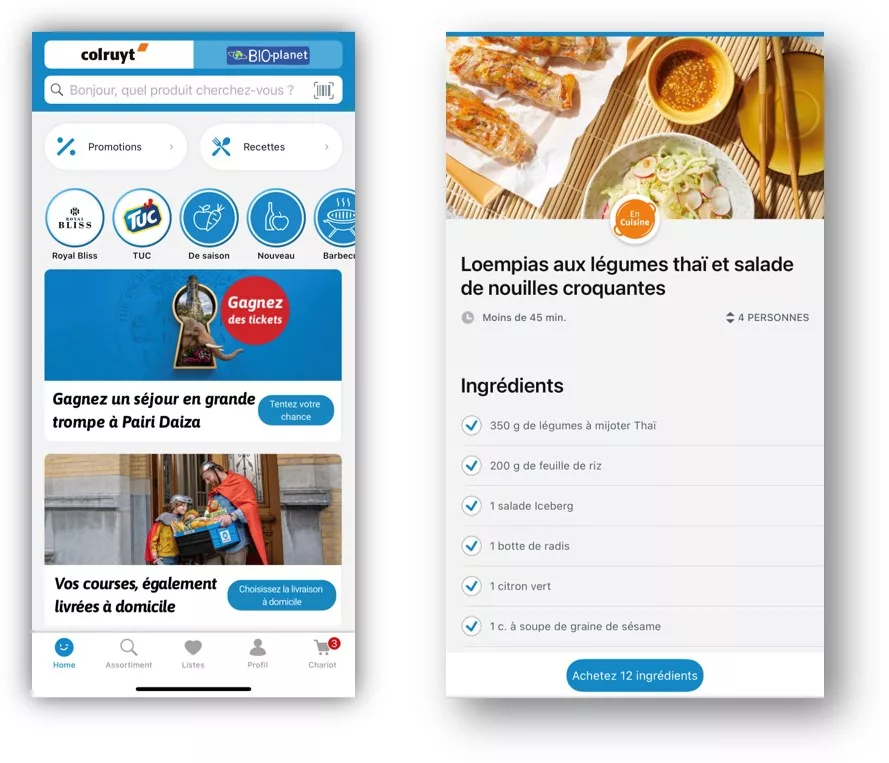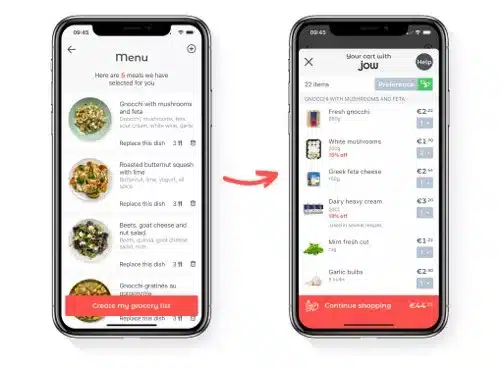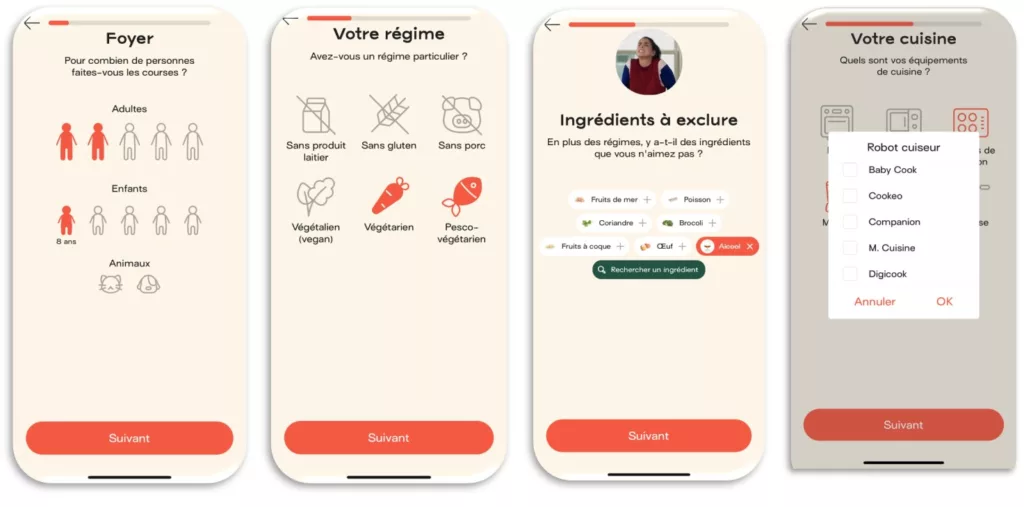
The majority of food purchases are still made in-store. Online sales have stabilized since the Covid crisis. In the United States, food sales in March 2023 ($8 billion) were even lower than in March 2022 ($8.7 billion). Nevertheless, the online channel remains a strategic priority for retailers. But a threat has just emerged: ChatGPT plugins. They could bypass distributors’ applications, as Jow has done in France and the United States.
Contact IntoTheMinds market research agency
If you only have 30 seconds
- Food e-commerce is a priority for retailers, despite a slowdown in sales. In Europe, the share of online sales (food and non-food) has dropped to 4.3%, and in the USA, online food sales will decline between March 2022 and March 2023 ($8 billion instead of $8.7 billion a year earlier).
- Recipes are an important lever for retailers: they enable cross-selling and increase the value of the average basket.
- Retailers using Miam see 20% more expensive baskets than they are normally.
- Several models coexist:
- Recipe websites that live off advertising.
- recipes proposed by retailers in their e-commerce applications
- third-party applications (such as Jow, Miam, Innit, or FlyMenu) that propose hundreds of recipes and find the ingredients at the distributor of your choice.
- Jow: 5 million registered users, 1.5 million of whom are active every month
- 250,000 orders placed each month on Jow
- Jow generates 300m€ in sales
- ChatGPT plugins are an extension of the Jow model, offering total flexibility and infinite customization.
Recipes and e-commerce: the 3 stages of evolution
All supermarket chains now offer a mobile shopping application. Most also propose recipes to make up for customers’ need for ideas. Customers can choose the recipes they like, and the ingredients are automatically added to the basket.
Recipes have become a thriving business with various business models.
Recipe websites
Recipe websites are great traffic generators but are threatened by chatGPT and other AI generators. These websites are completely disconnected from the retail ecosystem so that the customer experience could be more optimal. The prospect interested in a recipe will still have to find the ingredients himself … if he finds them at all.
Recipes in the retailer’s application
The most common model is for retailers to propose recipes to their customers. There is no personalization. It’s the same set of recipes for all customers at any given time. The advantage is that you can put all the ingredients in your basket with a single click.

Recipes outside the retailer’s app
Jow’s advantage over the version proposed by the retailers is the choice of recipes. This is the Jow model (but also Miam, Innit, and FlyMenu, to name a few). It’s an app that proposes hundreds of recipes. Connecting the app to your distributor accounts lets you order all the ingredients in one click.
Why the Jow app is innovative
The Jow app works primarily through a recommendation algorithm. You enter your household profile, preferences, intolerances, and equipment, and the app proposes ad hoc recipes. So far, so good. It’s just a matter of business rules that allow you to sort through a database of recipes.
But it gets magical when the recipe ingredients are automatically put into the basket of the distributor of your choice. The strength of the Jow app lies in its ability to connect to the apps of the various retailers in your country and automatically match their assortment to the ingredients you need.
The Jow business model is exciting because it changes the game’s rules. Jow manages the relationship with the customer by superimposing itself on retailers’ applications. And apparently, this relationship management is a hit. It enables the French SME to carry out 250,000 orders a month and generate sales of 300 million euros. A record for a company with a capital of just €13,000.
ChatGPT plugins are a natural extension of Jow
But there’s even more to Jow. ChatGPT’s plugins, and Instacart’s in particular, break all barriers:
- chatGPT gives access to an infinite list of recipes
- each recipe can be customized as desired (“a little less of this,” “a little more of that,” “I already have this ingredient,” etc.).
There’s something magical about seeing Instacart’s plugin work in ChatGPT. ChatGPT offers total flexibility to the user, who can modify the recipes at will. All variations become possible. And the plugin, by some miracle I can’t explain, finds all the ingredients in Instacart’s assortment.
In the example above, I asked ChatGPT for the recipe for Pasta Carbonara and then asked it to order only the ingredients I didn’t already have. The plugin then does all the work and proposes a personalized URL to place the order directly. The user experience is amazing, and the customer’s efforts are minimal.
Final thoughts and conclusions
ChatGPT’s plugins have a disruptive component that only some people understand. They drastically reduce the user’s effort in moving from the request (the prompt) to the final result. Moreover, these plugins can feed on behavioral data, i.e., the digital traces you leave when you surf (the famous implicit data). And it’s this cognitive component that has hitherto been detrimental to ChatGPT (see my analysis here).
These plugins are a major threat to retailers, as they will likely be superimposed on their applications. This raises the question of who “owns” the customer. The Jow example shows that an attractive value proposition can capture significant market share and change customer habits. The next step will be to go even further, offering consumers the possibility of customizing recipes. There’s a first-mover advantage in this race, and retailers have already lost the race. So don’t be surprised if traditional retailers spend millions on Jow, Miam, Innit, or FlyMenu.
Posted in Innovation.





